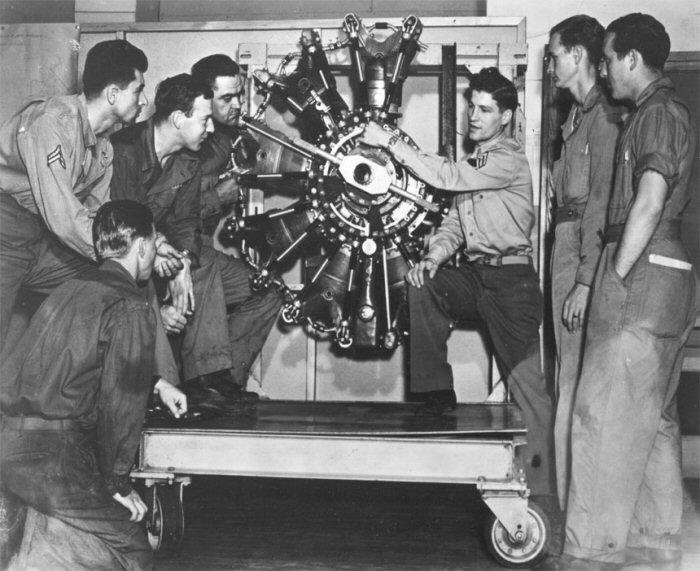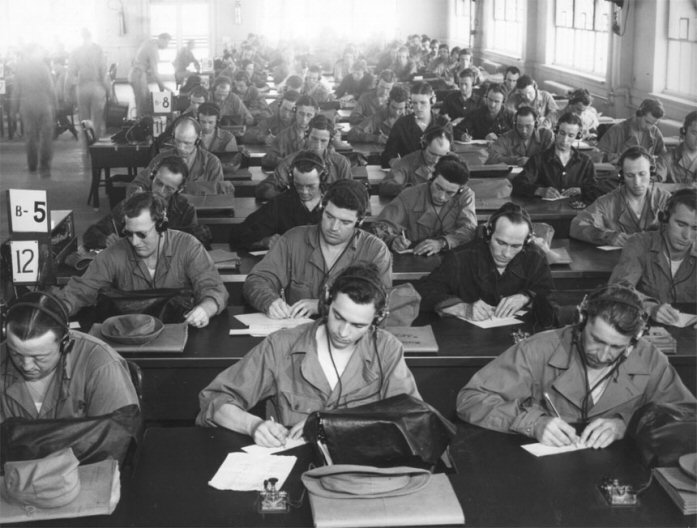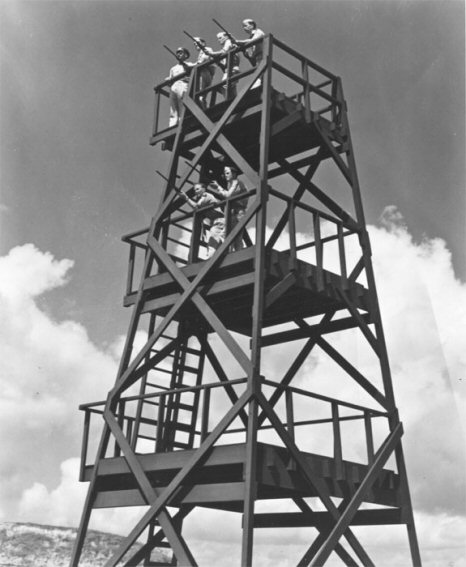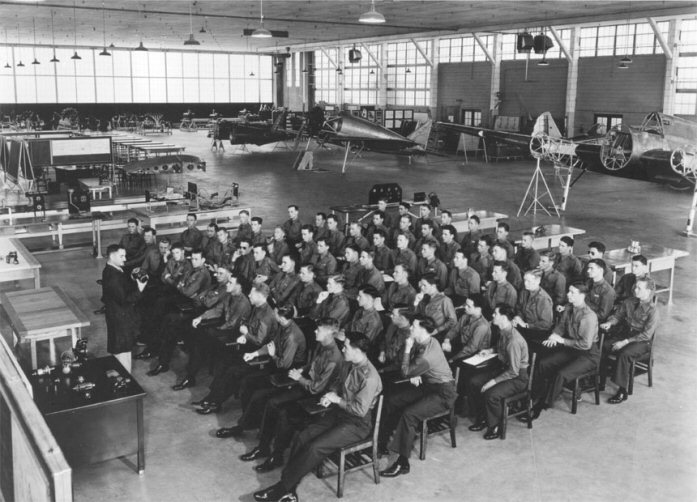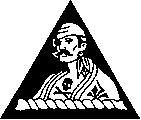
The 6th Bomb Group
Crew Training
Reporting for Duty
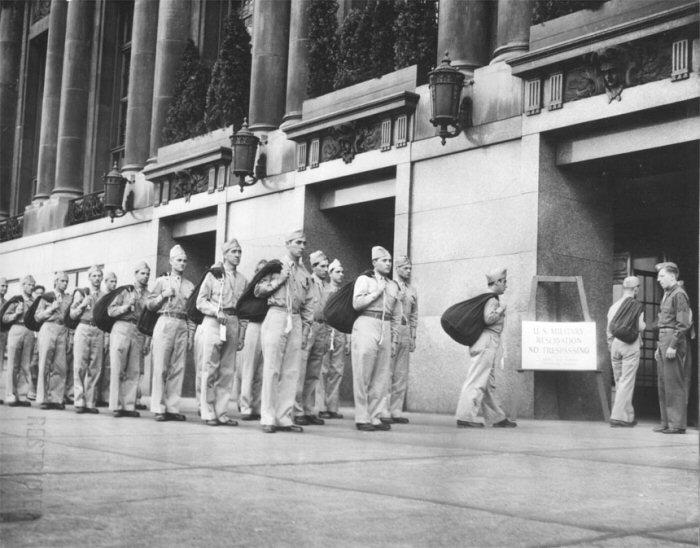
Picture from Air Force Historical Research Agency
The crews arrive for basic training
|
|---|
Ground Training
Picture from Air Force Historical Research Agency
Instruction in Airplane Mechanics Course, Ground School Building, Foster Field, Texas, Oct. 1942.
|
|---|
Picture from Air Force Historical Research Agency
Class Assembly in Basic Code
|
Picture from Air Force Historical Research Agency
Skeet tower at Foster Field, Texas - Summer 1942 |
Picture from Air Force Historical Research Agency
Ground school, Randolph Field, Texas
|
Air Training
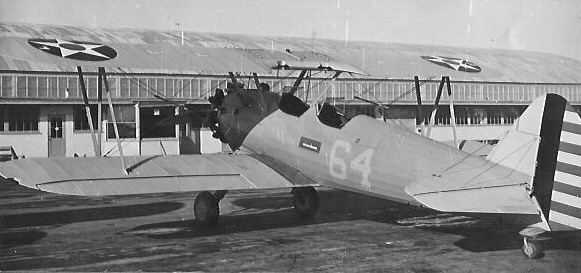
Photo from Terry Tucker Rhodes, daughter of 1/Lt Percy Tucker, all rights reserved
The Stearman PT-17 Primary Trainer. Many air crew learned to fly this plane.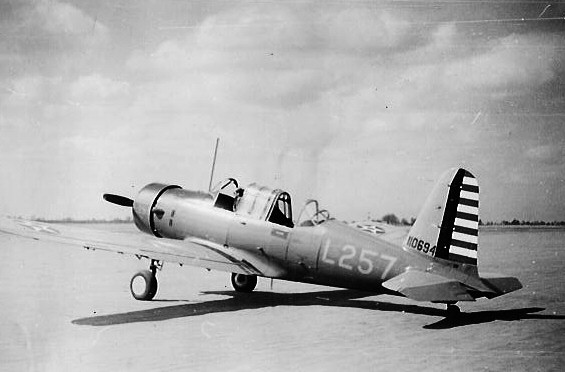
Photo from Terry Tucker Rhodes, daughter of 1/Lt Percy Tucker, all rights reserved
The Vultee Valiant BT-13 Basic Trainer (the "Vultee Vibrator")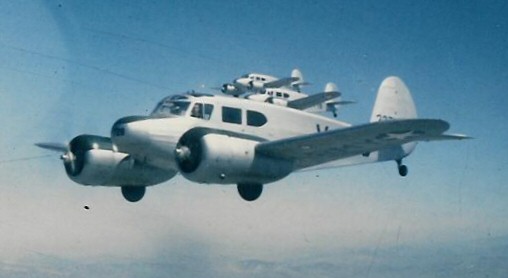
Photo from Terry Tucker Rhodes, daughter of 1/Lt Percy Tucker, all rights reserved
Cessna AT-17 "Bobcat", a twin-engine primary trainer.
The "Bamboo Bomber" was built mostly of wood.
Photo courtesy of Frank Barrella, all rights reserved.
A B-29 takes off on an early training mission at Tinian.
|
|---|
| After graduation from their respective schools, air crew were assigned to crews. Many of these crews would stay together for the duration of the war. They went on several training missions in Nebraska to learn to work together as a team. Later crews trained in the B-29 at Alamogordo, New Mexico. After arrival at Tinian, each crew went on one or two training missions. |
Grand Island, Nebraska
|
The first 6BG crews trained in Grand Island, Nebraska. The 6BG Association created a plaque for the people of Grand Island, thanking them for their hospitality. 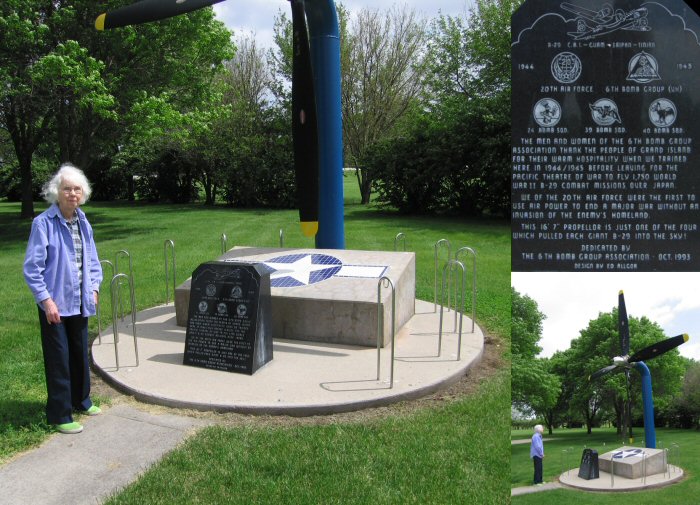
Photo provided by their son, Phil Conroy, who was born in Grand Island after the war.
Roma Conroy, wife of Cpl Harold J. Conroy, 39th BS maintenance, stands by the memorial.
The plaque reads:
|
Awards
Here are some of the close calls that 6BG men had while training: 1944 - Air Medal to 1/Lt Charles S. Gipson
First Lieutenant Charles S Gipson, O726372, 40th Bombardment Squadron, 6th Bombardment Group, Air Corps, United States Army.
For meritorious achievement while participating in aerial flight on 16 December 1944.
As Airplane Commander, he was leading a formation of B-29 aircraft on a fighter interception training mission at 5,000 feet
over an airfield at Miami, Florida.
Lieutenant Gipson displayed superior airmanship and outstanding courage when his number two engine burned off its mounting and rolled over
the top of the wing, tearing off the left horizontal stabilizer.
Applying full aileron and rudder, he was able to keep the airplane from rolling on its back.
With a fire still burning in the wing he ordered the crew to prepare for an emergency landing.
Losing 5000 feet of altitude in a 180 degree diving turn he lowered the gear and skillfully maneuvered the aircraft to a safe wheels-down
landing. Lieutenant Gipson's professional ability, calmness and good judgement reflect great credit on himself and the Army Air Forces.
1943 - Accident Report for 2/Lt Richard E. Holtzman
Report of Aircraft Accident, War Department, 25 January 1943 (Excerpts) |
